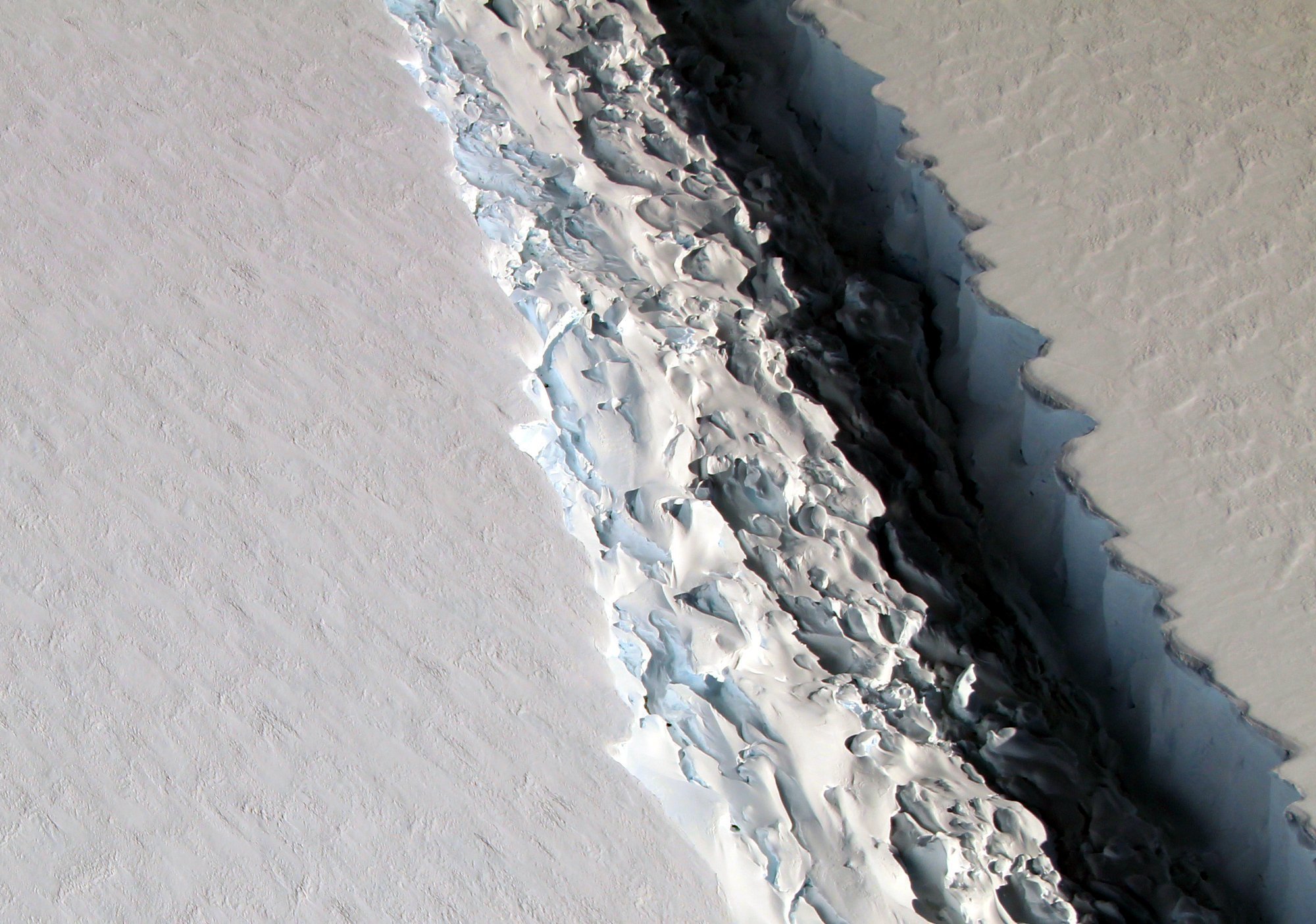Scientists say that a major crack along one of the largest ice shelves in Antarctica will soon break off, creating an iceberg that’s approximately the size of Delaware, according to Reuters. While it is not an immense cause for concern, it is contributing to a broader trend in Antarctica that scientists are worried stems from man-made greenhouse gas emissions, and could significantly increase sea levels.
In just the past week, the crack as spread an additional 11 miles and “fits within a broader trend of shrinking ice shelves in the region, which scientists believe is linked to global warming,” Reuters reported. Only eight miles of ice now sit between the potential iceberg and the open ocean. “I would expect it to occur quite rapidly, within days or weeks,” Dan McGrath, a scientist with the U.S. Geological Survey who has studied the ice sheet extensively, told Reuters in a phone interview.
[salon_video id=”14775454″]
Reuters reported:
The 1,900-square-mile (5,000-square-kilometer) chunk of ice has nearly completely broken off the Larsen C ice shelf, the fourth largest in Antarctica. When it does, it will shrink Larsen C by about 10 percent and leave it with the smallest area ever recorded.
Scientists from Project MIDAS warned in 2015 that the loss of such a large mass of ice would create a “significant risk” of the shelf as a whole becoming unstable and breaking up, although McGrath cautioned that the larger outcome is not guaranteed.
Although the incident has raised the attention of scientists they are not sounding any major alarms at the moment, and there are actually processes occurring in Antarctica that are far more concerning to scientists. The New York Times recently published a lengthy report which details scientists racing to figure out what is happening to the Ross Ice Shelf in the western part of the continent. “They are trying to map the thickness of the ice and the shape of the sea floor beneath it in an effort to gauge how vulnerable the shelf may be to collapse, and how soon that could happen,” the report said.
Scientists are also measuring how much man-induced climate change has weakened parts of the ice sheet. Computer forecasts show that if greenhouse gasses are continually produced at a “high level” there are parts of Antarctica that “could break up rapidly.”
There is still much more research required to understand the full scope of changes that are occurring with ice flows in Antarctica, and how much man-made emissions are directly playing a role. But current trends under President Donald Trump’s administration, including his recent withdrawal from the Paris climate accord, have shown that science is not even close to becoming a top priority for the foreseeable future.
But there’s nothing like cracking open a cold one with the boys, right?

